As we usher in 2023, it’s clear that the world of interior design is not immune to the evolving societal needs and lifestyle shifts. Changes in consumer preferences, the rising demand for sustainability, and the integration of technology have influenced how we design, produce, and perceive furniture. One piece of furniture that has significantly evolved over the years is the Ottoman.
In the face of the new year, we look forward to exciting trends in Ottoman design. But before we delve into the trends, let’s understand the Ottoman and its historical perspective.
Understanding the Ottoman: Beyond a Footstool
The Ottoman, although seemingly a straightforward piece of furniture, actually carries an array of complexities in its design. This functional piece has gained popularity in modern homes due to its versatility – serving not only as a footrest but also as additional seating, a coffee table, or even extra storage.
The beauty of an Ottoman lies in its adaptability. Available in various shapes, sizes, and materials, it seamlessly blends into any interior décor style, be it modern minimalist, bohemian, or traditional. Its choice is largely driven by the specific needs and aesthetic preferences of the homeowner.
For instance, round or oval Ottomans serve as great statement pieces in a living room, while rectangular ones provide more surface area and storage, making them an ideal choice for smaller spaces. When it comes to material, fabric Ottomans bring a warm and cozy feel, whereas leather ones offer a touch of elegance and are easier to clean.
At RimeHome, we offer a wide selection of Ottomans, each designed with careful thought to cater to various tastes and functional needs.
Related : What Is An Ottoman? A Comprehensive Guide

Ottoman Designs: A Historical Perspective
Tracing back to the Ottoman Empire (hence its name), Ottomans were primarily used as seating in domestic settings, usually piled with cushions. The design and usage of Ottomans have evolved significantly over the centuries, reflecting broader societal changes and design trends.
In the 18th century, Ottomans started to make their way into European households as exotic accents. They were eventually repurposed into a footstool, becoming a staple part of the Victorian parlour room in the 19th century.
The 20th century saw a further transformation in Ottoman design, reflecting the minimalist and modernist design movements. They became smaller, more versatile, and began serving multiple functions – a trend that continues in the 21st century.
A key historical moment that impacted modern Ottoman design was the mid-century modern movement, where design giants like Eames and Nelson incorporated the Ottoman into their iconic lounge chair designs, showcasing the Ottoman not merely as a functional piece but also as a style statement.
At RimeHome, we appreciate the rich history of Ottoman design and strive to reflect this historical depth in our designs while infusing them with modern aesthetics and functionality.
The Importance of Sustainable and Eco-Friendly Materials in Ottoman Design
The Rise of Sustainable Design
In recent years, the push towards sustainability has significantly influenced the design and production of furniture. As consumers become more eco-conscious, there is a rising demand for sustainable and eco-friendly products. According to a report by Nielsen, 73% of global consumers say they would definitely or probably change their consumption habits to reduce their impact on the environment. The world of Ottoman designs has not been left behind.
Eco-friendly Materials in Ottoman Production
Home Furniture Manufacturers, are increasingly embracing eco-friendly materials in Ottoman production. For instance, Ottomans made of recycled plastics, responsibly sourced wood, and organic fabrics are becoming increasingly popular, reducing the carbon footprint while offering aesthetically pleasing designs.

The Rise of Multifunctional and Space-Saving Ottoman Designs
Understanding Urban Living Needs
As urban living spaces become more compact, furniture designs need to adapt. According to a report by the United Nations, 68% of the world’s population is projected to live in urban areas by 2050. Consequently, there’s a growing demand for space-efficient furniture that performs multiple functions.
Multifunctional Designs in Ottomans
In response to this, designers are crafting Ottomans that double up as storage units, seating, or even fold-out beds. This multifunctional design caters to the need for practical and space-efficient furniture. For example, RimeHome’s range of storage Ottomans offers ample room for your belongings while serving as a comfortable seat, satisfying the needs of urban dwellers.
Space-Saving Innovations in Ottoman Design
Not just functional, Ottomans are getting innovative with their space-saving designs. Some Ottomans are designed to fit seamlessly into corners, while others can be folded or disassembled when not in use. Such innovations in Ottoman design have proven to be crucial in making the most of small living spaces.
Embracing Bold Colors and Patterns in Ottoman Design
The Psychology of Colors in Interior Design
The choice of color in interior design isn’t arbitrary. Colors evoke different emotions and can significantly influence a space’s ambiance. According to a study by the Pantone Color Institute, strong, empowering colors are set to dominate interior design in 2023, reflecting a shift towards self-expression and individuality.
Patterns and Their Impact on Space Perception
Patterns, like colors, play a vital role in interior design. They can make a space appear larger, smaller, or more elegant, depending on their use. This year, Ottoman designs are embracing vibrant patterns to add personality and character to living spaces.
Related : 8 Stunning Ottoman Designs That Will Transform Your Living Space
Ottoman Designs: Bold Colors and Patterns in Action
This trend can already be seen in the range of Ottomans offered by manufacturers, including RimeHome’s collection, where pieces featuring bold hues and eclectic patterns are available.

Technological Integration in Ottomans
The Rise of Smart Furniture
The impact of technology has permeated every aspect of our lives, and furniture design is no exception. Smart furniture is no longer a concept of the future; it’s here, and it’s revolutionizing the way we interact with our living spaces. A report by MarketsandMarkets predicts that the smart furniture market will reach $163.7 billion by 2028 (1), reflecting the growing consumer appetite for technologically enhanced furniture.
Technology Features in Modern Ottomans
Ottomans have joined this tech revolution, incorporating features such as built-in speakers, charging ports, and smart home compatibility. Such integrations make the Ottoman more than just a piece of furniture but a piece of technology that enhances convenience and entertainment at home.
Case Study: A High-Tech Ottoman Design
One example of a tech-integrated Ottoman is HomeMore’s “SmartHome” Ottoman, featuring built-in Bluetooth speakers and a wireless charging pad. This piece is an embodiment of how technology and design can meld together to create a product that is not only aesthetically pleasing but highly functional.
Technological Integration in Ottomans
The Rise of Smart Furniture
The impact of technology has permeated every aspect of our lives, and furniture design is no exception. Smart furniture is no longer a concept of the future; it’s here, and it’s revolutionizing the way we interact with our living spaces. A report by MarketsandMarkets predicts that the smart furniture market will reach $182.3 billion by 2025, reflecting the growing consumer appetite for technologically enhanced furniture.
Technology Features in Modern Ottomans
Ottomans have joined this tech revolution, incorporating features such as built-in speakers, charging ports, and smart home compatibility. Such integrations make the Ottoman more than just a piece of furniture but a piece of technology that enhances convenience and entertainment at home.
Case Study: A High-Tech Ottoman Design
One example of a tech-integrated Ottoman is RimeHome’s “SmartHome” Ottoman, featuring built-in Bluetooth speakers and a wireless charging pad. This piece is an embodiment of how technology and design can meld together to create a product that is not only aesthetically pleasing but highly functional.

The Impact of Customization and Personalization in Ottoman Design
The Demand for Customization and Personalization in Design
In today’s consumer-centric market, customization and personalization are becoming increasingly essential. According to a Deloitte study, one in three consumers wants personalized products, and 71% of them are willing to pay a premium for such offerings.
Custom and Personalized Ottoman Designs
The trend has also reflected in Ottoman design. Consumers now have the option to customize their Ottomans in terms of size, material, color, and even technological features to suit their preferences and match their existing decor.
Case Study: A Customizable Ottoman Design
RimeHome’s Ottoman line offers customization options for clients, allowing them to create a piece that truly reflects their style and meets their unique needs.
Ottoman Design Trends: Global Influences and Inspirations
Ottoman designs are also drawing inspiration from global trends and styles, including Scandinavian minimalism, Japanese Zen, and Bohemian chic. Such diversity allows Ottomans to cater to various aesthetics and cultures, broadening their appeal to a global market.
Conclusion: The Future of Ottoman Design
Ottoman designs in 2023 are undoubtedly an exciting mix of sustainability, multifunctionality, vibrant aesthetics, technological integration, customization, and global influence. These trends reflect an evolution in response to shifting consumer needs and lifestyle changes.
At RimeHome, we are committed to staying ahead of these trends, ensuring our Ottomans meet the highest standards of design, functionality, and sustainability. We’re not just making furniture; we’re creating versatile, stylish, and eco-friendly pieces that enhance our customers’ living spaces and make a positive impact on our planet.







